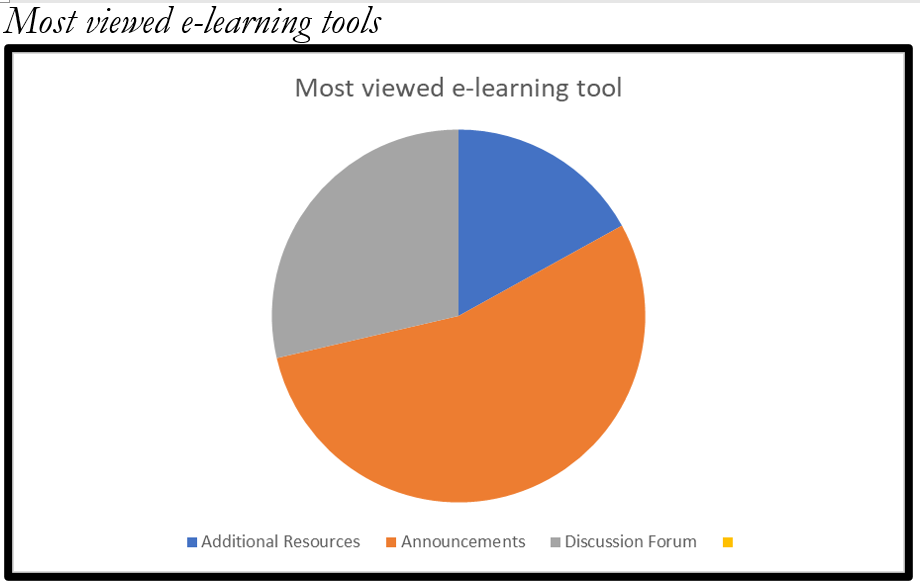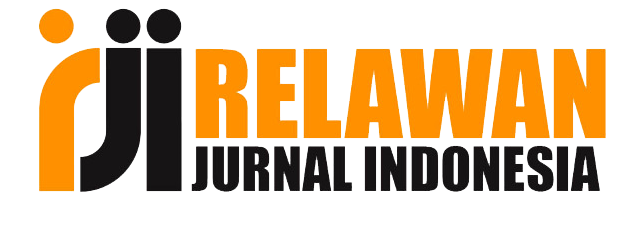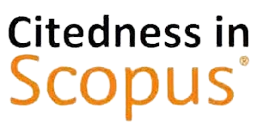Transforming workplace English in distance education: Exploring e-learning preferences and experiences in the digital age
DOI:
https://doi.org/10.33474/j-reall.v5i1.21168Keywords:
digital age, distance education, e-learning, learning management system, ODeL, workplace EnglishAbstract
In transforming digital progression in professional contexts, effective communication and career growth hinge significantly on mastering workplace English. Despite the increasing reliance on e-learning tools as a promising alternative in higher education, there exists a dearth of research focusing on individual preferences and experiences, particularly within distance education. This article fills this gap by conducting qualitative research firmly rooted in the community of inquiry theory. The primary objective of this study is to scrutinize the efficacy of e-learning tools and highlight factors that influence the preferences of first-year students engaged in distance education. Some key considerations encompass flexibility, interactivity, personalized learning, and accessibility. The research methodology involves observation of various e-learning platforms, in-depth interviews, and open-ended evaluation questions with first-year students who speak English as a second language in a South African open-distance e-learning university. The findings highlight an inclination towards virtual classrooms and customized online modules. Noteworthy aspects highlighted by participants include the significance of collaborative learning, real-world scenarios, continuous feedback mechanisms, and the integration of adaptive technologies. The significance of this research lies in its contribution to the advancement of distance education, which specifically focuses on workplace English skills. This research expands on distance education and provides specific implications for enhancing e-learning practices and their pivotal role in guiding the future workforce.
References
Ahmad, A.Q., Jawad, M.A., & Jaber, K.M. (2022). E-learning issues and solutions for students with disabilities during COVID-19 pandemic: Al-Zaytoonah University of Jordan case study. International Journal of Evaluation and Research in Education, 11(4), 2087-2094. http://doi.org/10.11591/ijere.v11i4.22842
Alariqi, A.A., Najafi, M., Abdulrab, M., Murray, C. & Slimanzai, H. (2019). Factors affecting e-learning effectiveness in a higher learning institution in Afghanistan. In Proceedings of the 11th International Conference on Education Technology and Computers, 176-181. https://doi.org/10.1145/3369255.3372275
Aliyeva, G.B. (2023). Educational trends in the development of philological education in Azerbaijan in the era of digitalisation: a forecast of the future. Futurity Education, 3(1), 58-69. https://doi.org/10.57125/FED.2023.25.03.05
Asiamah, N., Mensah, H., & Oteng-Abayie, E.F. (2017). General, target, and accessible population: Demystifying the concepts for effective sampling. The Qualitative Report, 22(6), 1607-1621. https://doi.org/10.46743/2160-3715/2017.2674
Bampton, R., & Cowton, C.J. (2002, May). The e-interview. In Forum Qualitative Sozialforschung/Forum: Qualitative Social Research, 3(2). https://doi.org/10.17169/fqs-3.2.848
Campbell, S., Greenwood, M., Prior, S., Shearer, T., Walkem, K., Young, S., Bywaters, D., & Walker, K. (2020). Purposive sampling: complex or simple? Research case examples. Journal of Research in Nursing, 25(8), 652-661. https://doi.org/10.1177/1744987120927206
Cao, X. (2022). Adoption of m-learning in business English course and its relationship to learning style preferences: An empirical investigation. Frontiers in Psychology, 13, 881866. https://doi.org/10.3389/fpsyg.2022.881866
Chen, R.H. (2021). Fostering students’ workplace communicative competence and collaborative mindset through an inquiry-based learning design. Education sciences, 11(1), 17. https://doi.org/10.3390/educsci11010017
Creswell, J.W. & Poth, C.N. (2016). Qualitative Inquiry and Research Design: Choosing Among Five Approaches. Sage publications.
Ebrahim, A., & Van den Berg, R. (2022). The influence of gamified e-learning quizzes on students' motivation - a case of programming students at a South African higher education institution. The Independent Journal of Teaching and Learning, 17(2), 44-62. Retrieved March 26, 2024, from http://www.scielo.org.za/scielo.php?script=sci_arttext&pid=S2519-56702022000200003&lng=en&tlng=en.
Elfaki, N.K., Abdulraheem, I., & Abdulrahim, R. (2019). Impact of e-learning vs traditional learning on student's performance and attitude. International Medical Journal, 24(3), 225-33.
El Khairat, M. (2021). An optimization of language learning in writing through e-learning: encountering Covid-19 pandemic. International Journal of Language Education, 5(1), 528-541. https://doi.org/10.26858/ijole.v5i1.15375
El-Masri, M., & Tarhini, A. (2017). Factors affecting the adoption of e-learning systems in Qatar and USA: Extending the Unified Theory of Acceptance and Use of Technology 2 (UTAUT2). Educational Technology Research and Development, 65, 743-763. https://doi.org/10.1007/s11423-016-9508-8
Enock, M.E. (2023). Workplace-context syllabus design towards ESP learning and teaching materials development. An Academic Interdisciplinary Peer-reviewed Journal Issued by the Faculty of Letters, Languages, and Arts, 7.
Etikan, I. & Bala, K., (2017). Sampling and sampling methods. Biometrics & Biostatistics International Journal, 5(6), p.00149. https://doi.org/10.15406/bbij.2017.05.00149
Garrison, D.R., Anderson, T., & Archer, W. (1999). Critical inquiry in a text-based environment: Computer conferencing in higher education. The Internet and Higher Education, 2(2), 87–105. https://doi.org/10.1016/S1096-7516(00)00016-6
Garrison, D.R., Anderson, T., & Archer, W. (2010). The first decade of the community of inquiry framework: A retrospective. The internet and higher education, 13(1-2), 5-9. https://doi.org/10.1016/j.iheduc.2009.10.003
Guest, G. (2015). Sampling and selecting participants in field research. In, Handbook of Methods in Cultural Anthropology, 2nd ed., H. Bernard and C. Gravlee (eds.), 215-250. Lanham, MD: Rowman & Littlefield.
Gumbo, M. T. (2023). Digitisation of higher education and research: Raising inclusivity and equity issues for indigenous students. South African Computer Journal, 35(1), 149-163. https://doi.org/10.18489/sacj.v35i1.1107
Hargitai, D.M., Pinzaru, F., & Veres, Z. (2021). Integrating business students' e-learning preferences into knowledge management of universities after the COVID-19 pandemic. Sustainability, 13(5), 2478. https://doi.org/10.3390/su13052478
Heale, R. & Twycross, A. (2018). What is a case study? Evidence-Based Nursing, 21(1), 7-8. https://doi.org/10.1136/eb-2017-102845
Hu, D., Yuan, B., Luo, J., & Wang, M. (2021). A review of empirical research on ICT applications in teacher professional development and teaching practice. Knowledge Management & E-Learning, 13(1), 1-20. http://www.kmel-journal.org/ojs/index.php/online-publication/article/view/463
Joaquim, I.M., Morolong, M.P., Tundumula, E.T., & Cheng, W. (2022). Preferences and insights of learning process in pandemic era: A case study of South Africa. Higher Education, Skills, and Work-Based Learning, 13. https://doi.org/10.1108/HESWBL-01-2022-0010
Jung, I. (Ed.). (2019). Open and distance education theory revisited: Implications for the digital era. Singapore: Springer.
Latip, M.S.A., Tamrin, M., Noh, I., Rahim, F.A., Nur, S., & Latip, N.A. (2022). Factors affecting e-learning acceptance among students: The moderating effect of self-efficacy. International Journal of Information and Education Technology, 12(2), 116-122. https://doi.org/10.18178/ijiet.2022.12.2.1594
Letseka, M., Letseka, M.M., & Pitsoe, V. (2018). The challenges of e-learning in South Africa. Trends in E-learning, 8, 121-138. https://doi.org/10.5772/intechopen.74843
Lifintsev, D., & Wellbrock, W. (2019). Cross-cultural communication in the digital age. Estudos em Comunicação, 1(28). https://doi.org/10.25768/fal.ec.n28.a05
Lynch, M. (2020). E-learning during a global pandemic. Asian Journal of Distance Education, 15(1), 189-195. https://doi.org/10.5281/zenodo.3881785
Mallia, J.G. (2014). Inductive and deductive approaches to teaching English grammar. Arab World English Journal, 5(2), 221-235. Retrieved on March 25, 2024 from https://awej.org/images/AllIssues/Volume5/Volume5Number2June2014/17.pdf
Maphoto, K. (2022). First-year students at an open distance and e-learning institution: Perceptions, expectations, and challenges associated with academic writing feedback. Journal for Language Teaching, 56(1), 1 – 19. https://doi.org/10.56285/jltVol56iss1a5413
Megahed, N.A., & Ghoneim, E.M. (2022). E-learning ecosystem metaphor: building sustainable education for the post-COVID-19 era. International Journal of Learning Technology, 17(2), 133-153. http://doi.org/10.1504/IJLT.2022.125075
Moldagali, B., Sultanova, B., Akhtayeva, N., Suleimenova, A., & Akimbekova, S. (2022). Innovative technologies: Digitalisation of education. Journal of Social Studies Education Research, 13(4), 209-224. Retrieved March 25, 2024. from https://www.learntechlib.org/p/222973/
Mpungose, C.B. (2023). Lecturers’ reflections on use of Zoom video conferencing technology for e-learning at a South African university in the context of coronavirus. African Identities, 21(2), 266-282. https://doi.org/10.1080/14725843.2021.1902268
Nikou, S., & Maslov, I. (2023). Finnish university students' satisfaction with e-learning outcomes during the COVID-19 pandemic. International Journal of Educational Management, 37(1), 1-21. https://doi.org/10.1108/IJEM-04-2022-0166
Ngubane-Mokiwa, S. & Letseka, M. (2015). Shift from open distance learning to open distance e-learning. In Open Distance Learning (ODL) in South Africa: Nova Science Publishers-New York 129, 1-14
Nortvig, A.M., Petersen, A.K., & Balle, S.H. (2018). A literature review of the factors influencing e‑learning and blended learning in relation to learning outcome, student satisfaction and engagement. Electronic Journal of E-learning, 16(1), 46-55. Available online at www.ejel.org
Ortiz, R.R. (2022). Education and digitalisation in the global south: A reflection from the Colombian case. New Explorations: Studies in Culture and Communication, 2(3), 48-62. Retrieved March 25, 2024 from https://jps.library.utoronto.ca/index.php/nexj/article/view/39025/29737
Patton, M.Q. (2002). Qualitative research & evaluation methods (3rd ed.). Thousand Oaks, CA: Sage.
Petty, N.J., Thomson, O.P. & Stew, G. (2012). “Ready for a paradigm shift? Part 2: Introducing qualitative research methodologies and methods.” Manual Therapy, 17(5), 378-384. https://doi.org/10.1016/j.math.2012.03.004
Reja, U., Manfreda, K.L., Hlebec, V., & Vehovar, V. (2003). Open-ended vs. close-ended questions in Web questionnaires. In: [online]. Published Scientific Conference Contribution. 159–177. [Accessed 26 March 2024]. Retrieved from: http://mrvar.fdv.uni-lj.si/pub/mz/mz19/reja.pdf
Sandybayev, A. (2020). The impact of e-learning technologies on student's motivation: Student centered interaction in business education. International Journal of Research in Tourism and Hospitality (IJRTH), 6(1), 16-24. http://dx.doi.org/10.20431/2455-0043.0601002
Sevnarayan, K. (2022). Reimaging eLearning technologies to support students: On reducing transactional distance at an open and distance eLearning institution. E-Learning and Digital Media, 19(4), 421–439. https://doi.org/10.1177/20427530221096535
Sevnarayan, K. (2023a). The implementation of Telegram as a pedagogical tool to enhance student motivation and interaction. Journal of Education Technology, 7(1), 71–79. https://doi.org/10.23887/jet.v7i1.52488
Sevnarayan, K. (2023b). ‘Telegram as a pedagogical tool during the Covid-19 pandemic’. In Vikas, K., & Rewari, M., Book Pandemics in the Age of Social Media: Information and Misinformation in Developing Nations (1st Ed.). London: Routledge, 136-154, http://dx.doi.org/10.4324/9781003315278-8
Sevnarayan, K., Maphoto, K., & Lephalala, M. M. K. (2023). Moodle in an open distance e-learning university: Is it a building or stumbling block to student interaction and autonomy? Progressio, 44. 1-19. https://doi.org/10.25159/2663-5895/11608
Sey, K., & Em, S. (2023). Attitudes and perceptions of using Zoom: A survey of Cambodian university students. Jurnal As-Salam, 7(1), 1-15. https://doi.org/10.37249/assalam.v7i1.511
Shahzad, K., Khan, S.A., Javed, Y., & Iqbal, A. (2023). E-Learning for Continuing Professional Development of University Librarians: A Systematic Review. Sustainability, 15(1), 849. https://doi.org/10.3390/su15010849
Shea, P., & Bidjerano, T. (2010). “Learning presence: Towards a theory of self-efficacy, self-regulation, and the development of a communities of inquiry in online and blended learning environments.” Computers and Education, 55(4), 1721–1731. https://doi.org/10.1016/j.compedu.2010.07.017
Stine, J., Trumbore, A., Woll, T., & Sambucetti, H. (2019). Implications of artificial intelligence on business schools and lifelong learning. Final Report at Academic Leadership Group.
Sukamolson, S. (2007). Fundamentals of quantitative research. Language Institute Chulalongkorn University, 1(3), 1-20. Retrieved March 25, 2024 from http://carinadizonmaellt.com/LANGRES/pdf/30.pdf
Swan, J. (1993). Metaphor in action: the observation schedule in a reflective approach to teacher education. ELT Journal, 47(3), 242-249. https://doi.org/10.1093/elt/47.3.242
Tasker, T. J., & Cisneroz, A. (2019). Open-ended questions in qualitative research: Keeping an open mind as researchers. Curriculum and Teaching Dialogue, 21(1-2), 119+. https://link.gale.com/apps/doc/A607761068/AONE?u=anon~bf59f53b&sid=googleScholar&xid=bd8e7c69
Vaismoradi, M., Turunen, H., & Bondas, T. (2013). Content analysis and thematic analysis: Implications for conducting a qualitative descriptive study. Nursing & Health Sciences, 15(3), 398-405. https://doi.org/10.1111/nhs.12048
Vannasy, V., & Sengsouliya, S. (2023). Key predictors of the implementation of workplace learning in higher education. Andragoška spoznanja, 29(1), 81-97. https://doi.org/10.4312/as/10447
Wang, Y.C., & Hsu, L. (2020). Shall we go to the MALL? Students’ perceptions of a business English learning app. International Journal of Information and Education Technology, 10(2), 110-116. https://doi.org/10.18178/ijiet.2020.10.2.1348
Ward-Cox, M.W. (2020). Validation of a rating scale for distance education university student essays in a literature-based module (Doctoral thesis, University of South Africa) https://uir.unisa.ac.za/handle/10500/26935

Downloads
Published
How to Cite
Issue
Section
License
Copyright (c) 2024 Zuleika Suliman, Kershnee Sevnarayan

This work is licensed under a Creative Commons Attribution 4.0 International License.
Authors who publish this journal agree to the following terms:
- Authors retain copyright and grant the journal right of first publication with the work simultaneously licensed under a Creative Commons Attribution License that allows others to share the work with an acknowledgement of the work's authorship and initial publication in this journal.
- Authors can separately make additional contractual arrangements for non-exclusive distribution published by the journal (e.g., publish it in a book), with an acknowledgement of its initial publication in this journal.
- Authors are allowed and encouraged to send their work via online (e.g., in the institutional repositories or their website) after published by the journal.





















